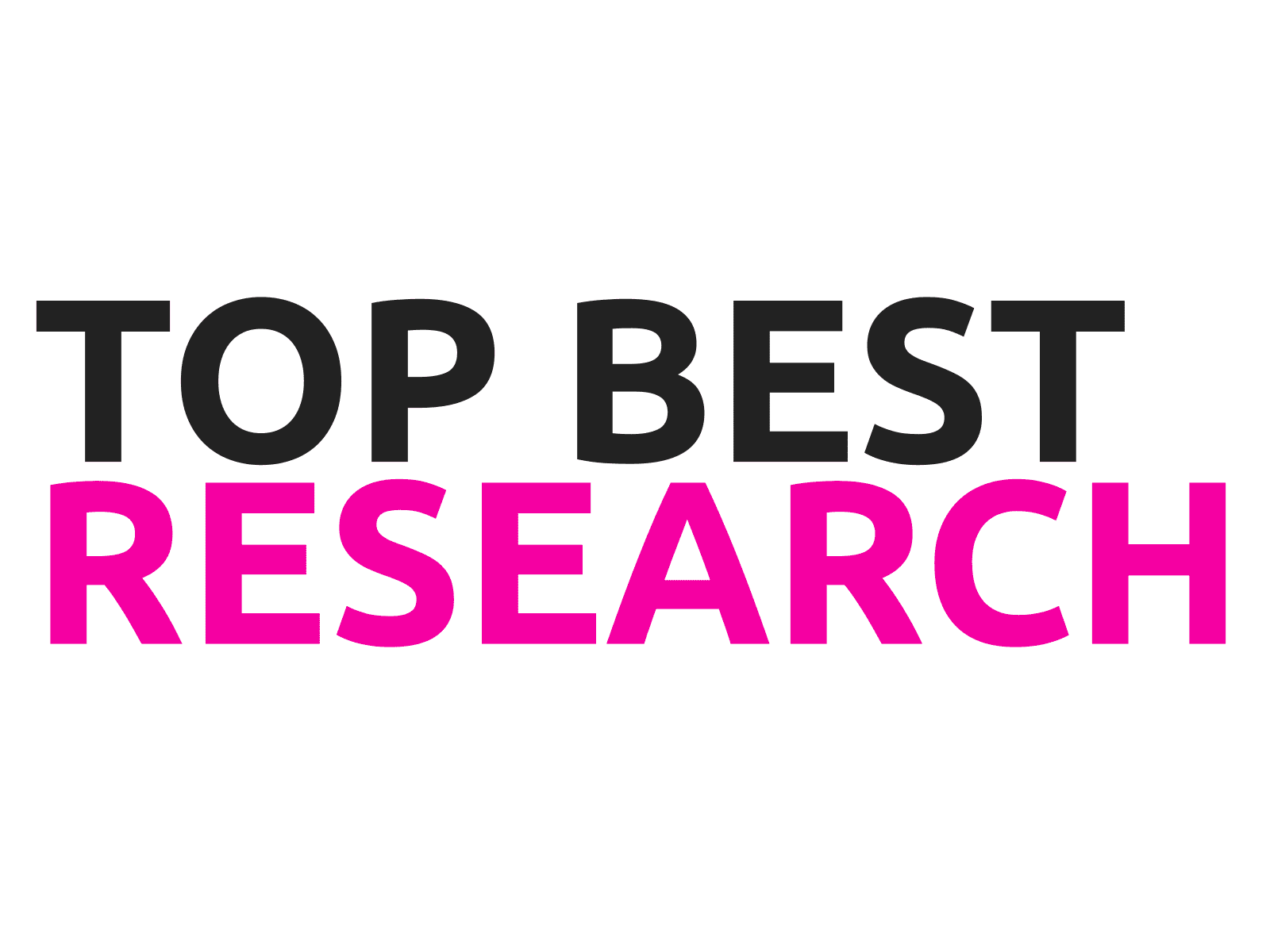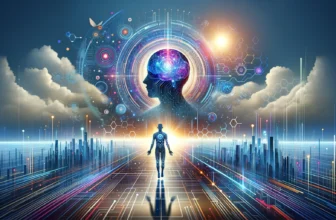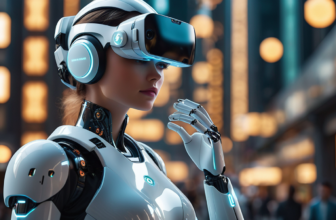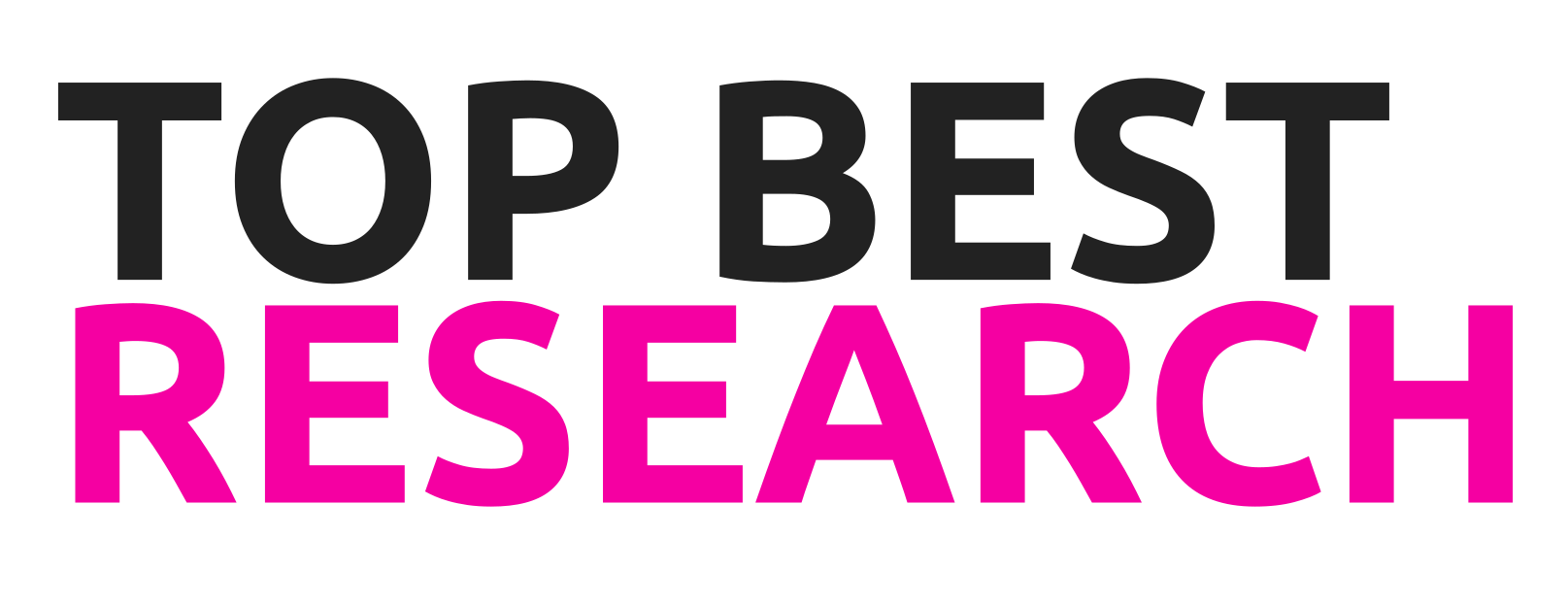Introduction: At the Dawn of the AI Era
Now is perhaps the most pivotal point in human history. Rapid advancements in artificial intelligence are completely transforming our society. The rise of AI, from self-driving cars to chatbots to automated legal assistants, ushers in an era of possibility—and uncertainty.

How will humans adapt to sharing the world with intelligent machines? Which roles are best performed by AI, and which are best left to people? To thrive, we must thoughtfully co-exist with artificial intelligence. In examining AI’s potential impacts across 10 key segments of life, this guide provides the insights to forge a brighter shared future.
This comprehensive analysis will empower you to maximize the benefits and minimize the risks of emerging technologies. Let’s explore the most critical intersections of human and machine, using facts, reasoned debate, and nuanced perspectives. By better understanding AI’s promise and perils across diverse domains, we can collectively shape an AI-powered society that enriches our lives. The future remains unwritten—through wisdom and care, we can write it well.
Entertainment

The entertainment industry has already seen major impacts from AI, particularly when it comes to art and music generation. Apps like DALL-E 2 and Midjourney allow users to generate detailed AI art simply by typing a text prompt. Music generation tools like Jukebox and MuseNet can create original songs, instrumentals, and more.
On the positive side, this democratizes art creation and allows anyone to instantly generate custom visuals and music. It also expands creative possibilities by enabling hybrid human/AI collaborations. However, there are concerns that AI art and music lack a human touch or creative intent. As the technology improves, it may become difficult to discern AI creations from human ones. This could disrupt industries like graphic design, photography, and music composition. There are also intellectual property concerns with AI art platforms using copyrighted training data.
Overall entertainment AI has incredible creative potential, but steps may need to be taken to ensure humans still maintain creative roles. The technology should assist human creativity rather than fully replace it.
Creativity and Content Creation

AI is quickly advancing in creative fields like writing, art, and music. This raises concerns about the future of human creativity and jobs.
AI Writing and Content Creation
AI tools like ChatGPT can generate human-like text on demand. This could replace many writing and content jobs.
Overall, AI writing tools have potential but lack human originality. Oversight is needed to maintain quality and ethics. More research on mitigating job loss is crucial.
News and Journalism

The rise of AI is transforming the news and journalism industry in significant ways. AI tools are being used to generate news articles, conduct reporting, and even write commentary and analysis.
On the positive side, AI allows newsrooms with limited resources to increase their output and cover more stories and topics. AI systems can churn out articles on things like sports results, financial reports, and crime data quickly and at high volumes. This takes some of the burden off of journalists so they can focus on more in-depth, investigative pieces. AI also opens up possibilities for automatically translating content into multiple languages to reach wider audiences.
Some argued benefits of AI news writing are increased speed and efficiency as well as consistency in quality and style. AI models can be trained on tons of sample articles to learn to write in a formulaic news style. With the right training data and algorithms, AI news writing could become difficult to distinguish from human-written articles.
However, many fear AI news reporting lacks nuance, emotional intelligence, and the ability to connect with human readers. Stories generated by AI may serve more as plain data summaries than compelling narratives that build understanding. Some argue automating basic news writing also leads to lower quality jobs and less public interest in serious journalism.
Relying too heavily on AI news creation runs the risk of biased or inaccurate reporting since the AI is only as good as the data it receives. Overuse of AI also promotes homogenization in news through formulaic writing. Journalism is fundamentally about making sense of complex issues for the public good – not simply converting raw information into articles.
The role of AI should likely be to augment human journalism rather than replace it entirely. With the right checks and balances from editors and oversight on how AI tools are designed and deployed, AI enables journalism to thrive in an increasingly digital world.
Law

Artificial intelligence is already transforming the legal profession in several ways. AI assistants can review documents and help prepare legal briefs more efficiently than humans alone. For legal research, AI systems can analyze huge amounts of case law and surfaced the most relevant precedents for attorneys. Some AI applications even aim to predict case outcomes to inform legal strategy.
However, AI also raises concerns around legal ethics and accountability. If an AI system makes an error, who is liable – the developer, the user, or the AI itself? AI may also perpetuate biases since the training data often comes from past decisions. While AI will continue automating routine legal work, lawyers adept at human skills like empathy, creativity, and complex reasoning will likely maintain their value.
Overall, AI can amplify human capabilities in law if implemented thoughtfully, but may also disrupt legal traditions and structures. Ongoing oversight and governance will be needed to ensure AI promotes justice.
Medicine and Healthcare

Artificial intelligence is playing an ever-increasing role in medicine and healthcare. AI systems can analyze large amounts of patient data and medical research to make diagnoses or treatment recommendations. Some key areas where AI is making an impact:
- Diagnosis – AI systems can quickly analyze patient symptoms, medical history, and test results to provide possible diagnoses. Systems like IBM Watson have shown ability to diagnose certain cancers and other conditions comparable to human physicians.
- Imaging Analysis – Algorithms can detect abnormalities and flag images for further review by radiologists. This can aid in detecting issues early. AI is being applied to read X-rays, MRIs, CT scans and more.
- Risk Prediction – AI models can take into account multiple patient risk factors to predict outcomes like disease progression, hospital readmission risk, or likelihood of an adverse event. This allows preventative measures.
- Treatment Recommendations – Based on clinical guidelines and accumulated data, AI can suggest optimal treatment plans tailored to an individual patient’s needs. This assists doctors in complex decisions.
- Drug Discovery & Development – – AI enables scanning and analysis of massive amounts of research to identify promising new drug candidates. It also aids in simulating how drug compounds might interact in the body.
- Personalized Medicine – AI can analyze genetics, lifestyle factors and medical history to provide tailored health advice and treatment for specific individuals. This makes medicine more targeted and effective.
- Clinical Trial Recruitment – AI can scan patient databases to identify the best matches for clinical trials based on required criteria. This makes recruiting faster and more efficient.
- Medical Research – Algorithms can rapidly analyze large data sets to find patterns and insights. This enables discoveries that can improve understanding of diseases, treatments, outcomes, and more.
The benefits are clear in using AI to augment human physicians and improve healthcare. But risks like bias, errors, and over-reliance on technology must be mitigated through rigorous testing and physician oversight. Overall, AI holds great promise to enhance the quality and accessibility of healthcare if applied properly.
Driving and Transportation

Self-driving vehicles and delivery drones have the potential to radically transform transportation and logistics.
I would rate the pros as 7/10 for significant potential benefits but also needing time to develop properly. I would rate the cons as 6/10 for legitimately concerning impacts that should be addressed, but not dealbreakers. With thoughtful policies, self-driving vehicles and delivery drones could provide great advantages. But we must be cautious and address their downsides.
Filmmaking

AI is rapidly transforming the filmmaking industry through advanced visual effects, editing capabilities, and even AI-generated content.
On the pros side, AI visual effects tools like deepfakes can create hyper-realistic CGI characters and backgrounds that were previously impossible or required enormous budgets. This expands creative possibilities for filmmakers and reduces costs. AI can also assist with tasks like color correction, editing, motion tracking, and more, saving significant time and effort.
For indie filmmakers and studios on a budget, AI tools make many complex VFX achievable. This levels the playing field and opens up new stylistic approaches. Audiences also benefit from more captivating visuals.
However, there are cons too. Widespread AI-generated content raises concerns about authenticity and ethics. Overuse of AI VFX could make films feel artificial or homogenized. The technology may displace VFX jobs and artists’ unique skills. Without oversight, deepfakes also enable creation of nonconsensual or harmful content.
Regulating this emerging technology while still fostering innovation will be crucial. Overall, AI presents exciting new horizons for visual storytelling, if used responsibly. A balanced approach can maximize benefits while minimizing risks.
Social Media Influencing

With over 4.55 billion social media users worldwide in 2021, social media influencing has become a popular career path for many. AI is poised to have a major impact on this field in the coming years.
On the plus side, AI can help create and curate social media content like posts, stories, and tweets based on data about what resonates best with a creator’s audience. AI tools can also engage with followers by responding to comments and messages. This saves influencers time and allows them to scale their reach.
However, reliance on AI for social media influencing does raise some concerns. Having AI generate content runs the risk of making an influencer seem less authentic and human. And it takes away the creative process. AI is also limited in understanding nuance and empathy when engaging with followers. Conversations may become stilted or robotic.
There are also fears that AI could help inauthentic influencers grow huge followings quickly and easily manipulate social platforms. Safeguards will need to be put in place.
Education

AI is already being used to enhance and personalize education in exciting ways. AI-powered tutoring systems can adapt to a student’s learning style and pace to provide customized instruction and practice. These tutors have infinite patience and availability, allowing students to get help whenever they need it.
AI also enables adaptive learning software that assesses a student’s strengths and weaknesses to create personalized learning plans. The software adjusts the material and questions based on the student’s progress and performance. This allows students to focus their time on the concepts they struggle with rather than one-size-fits-all curriculum. Adaptive learning powered by AI has been shown to be more engaging for students, promoting improved information retention.
Looking ahead, AI promises to make learning even more personalized. Algorithms can analyze a learner’s emotions, facial expressions, and biometric data during lessons to understand their state of mind and engagement. It can then adjust teaching strategies in real-time to optimize for motivation, comprehension and growth. AI can also provide feedback to educators on how to improve their methods for specific students.
While AI tutoring still has limitations compared to human teachers, it has untapped potential to enhance education. Students can leverage the technology to take control over what, how, and when they learn. AI-powered tools can make learning more accessible, engaging, and effective.





